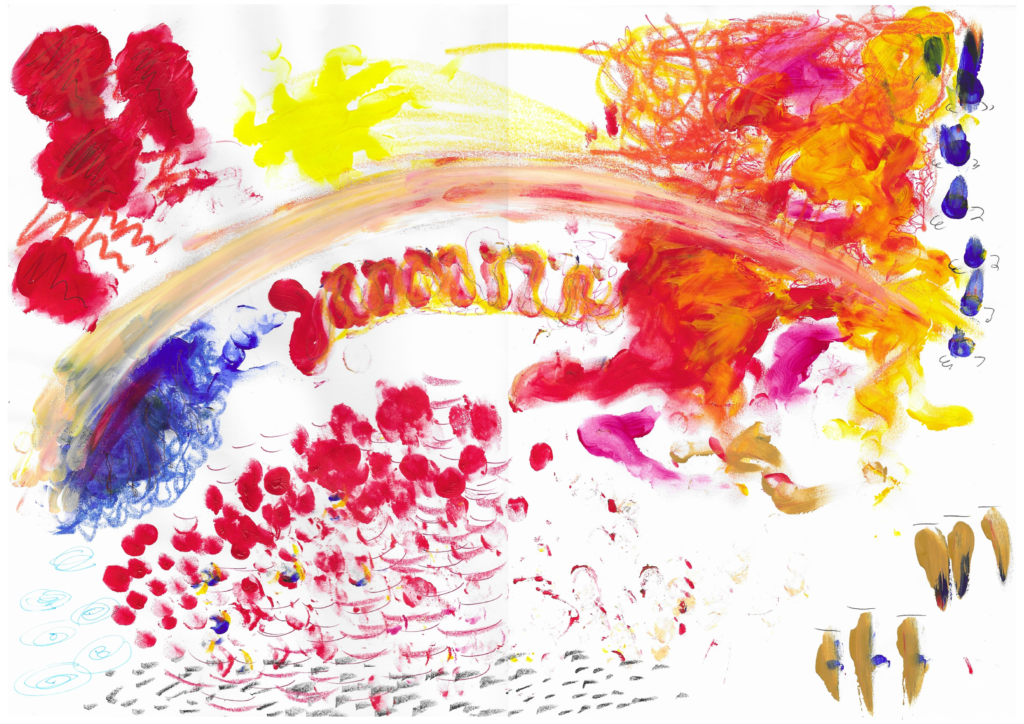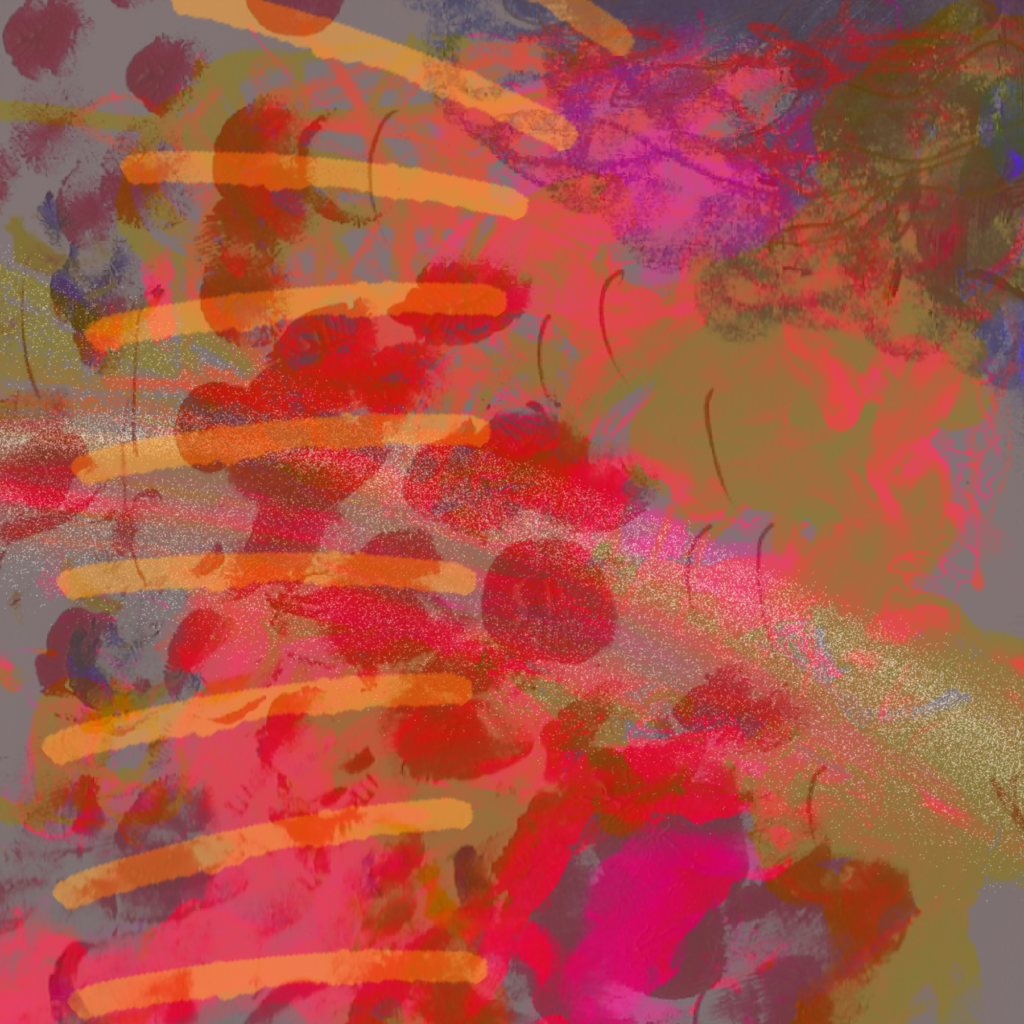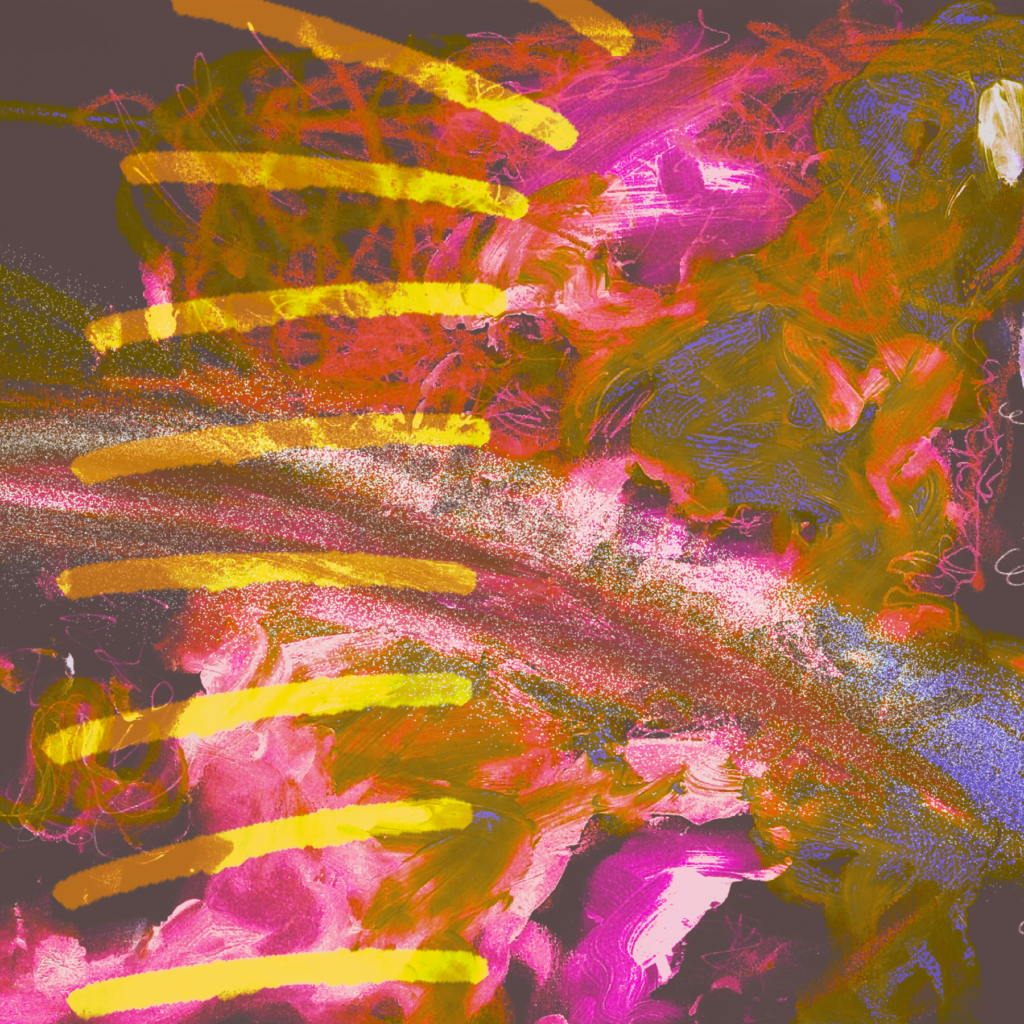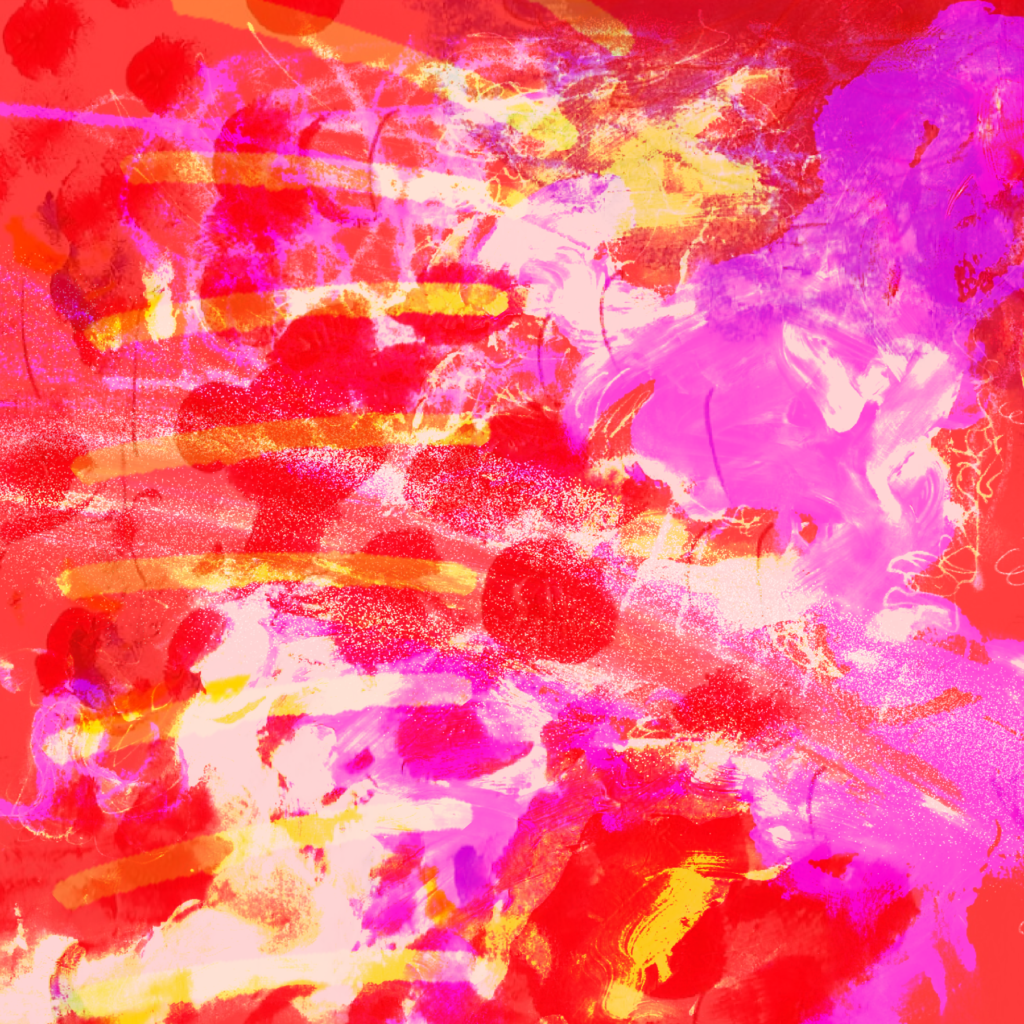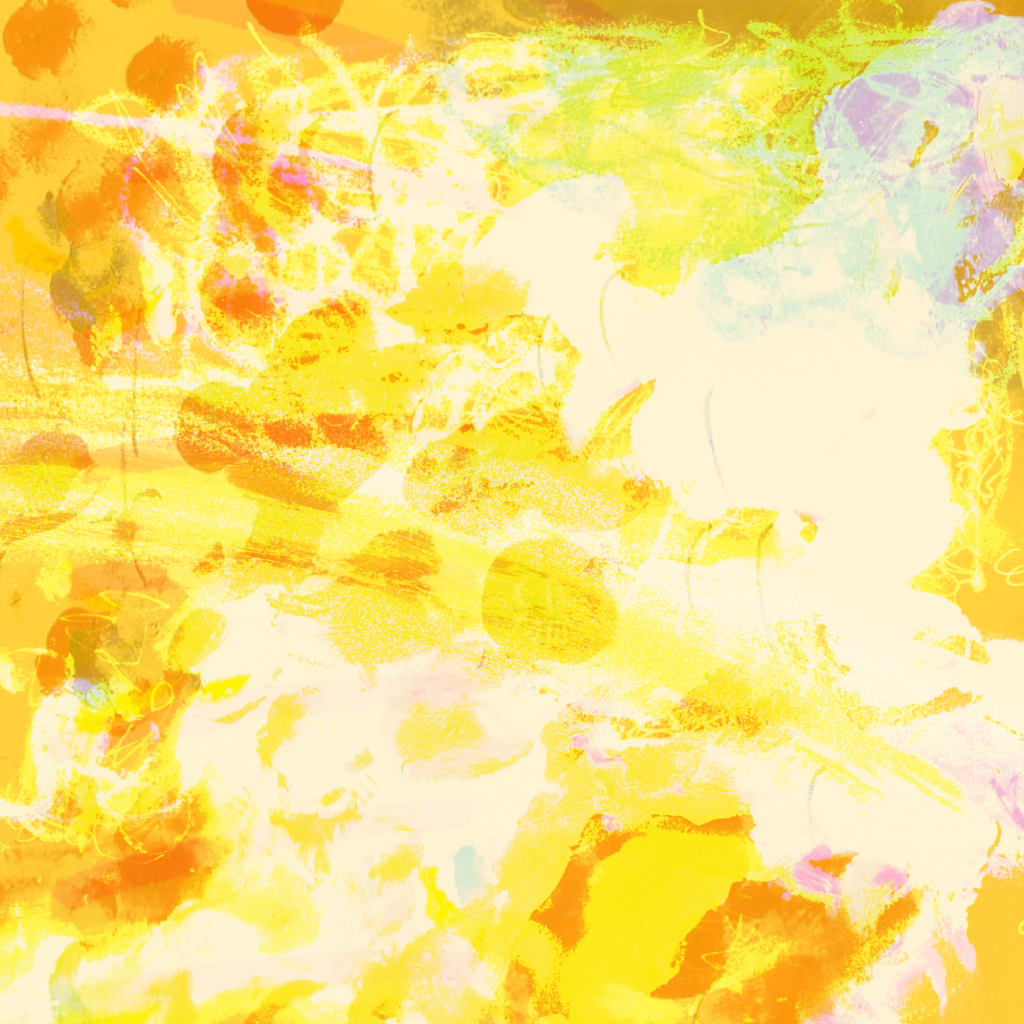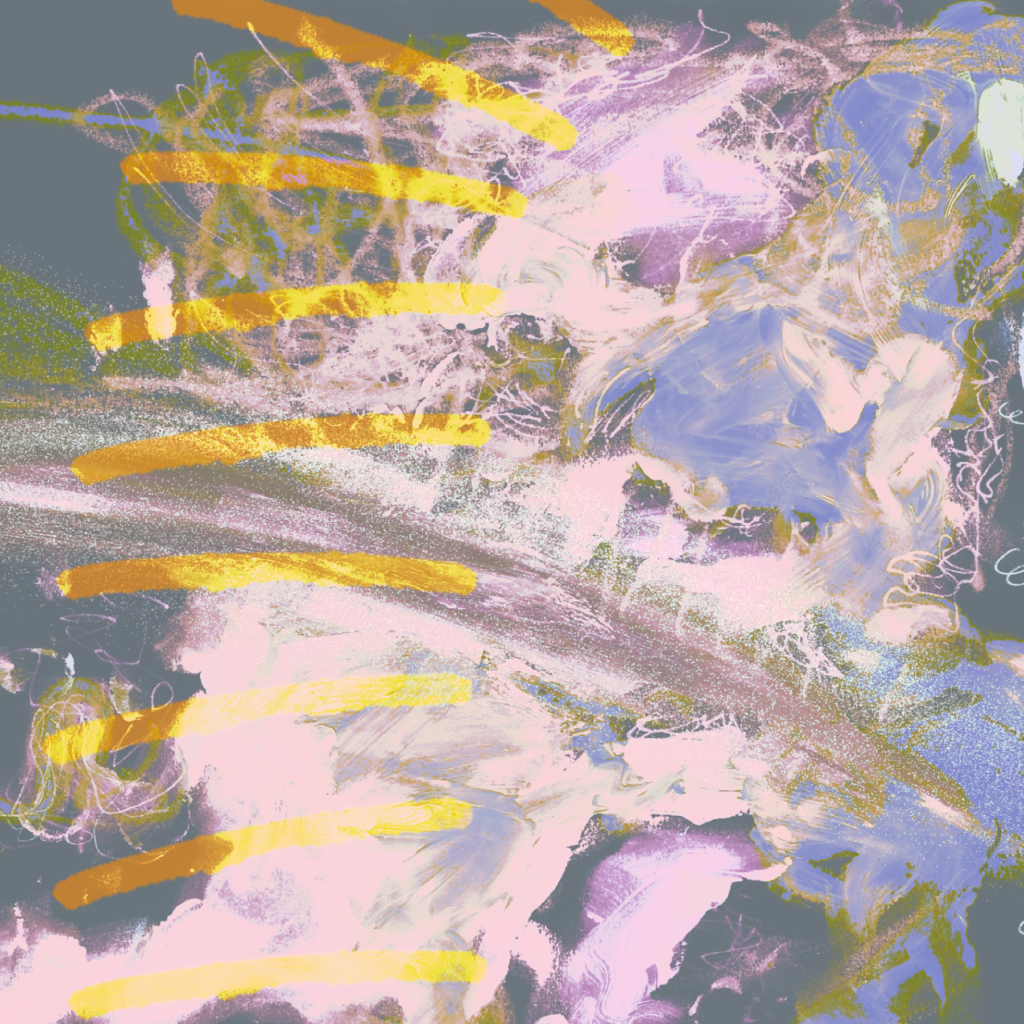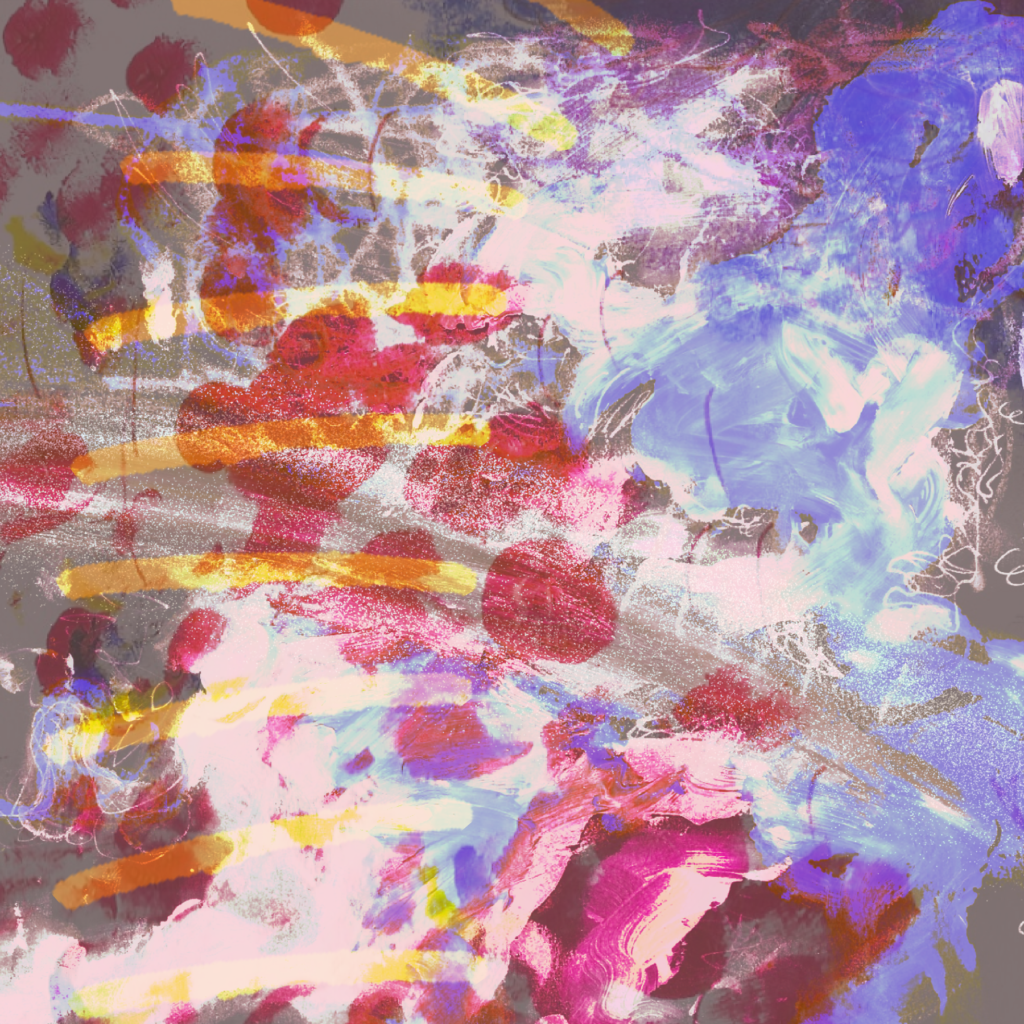Brief
Listen to a piece of instrumental music by a musician such as:
George Gershwin The Gypsy Kings Beethoven Miles Davies
As you listen to the music create marks which convey your interpretation of the essence or mood of the piece. Work quickly and intuitively to bring a degree of self-expression to the exercise. Be selective in your use of materials, colours, marks and textures.
Stand back from your work and choose an adjective or word that you feel best describes the tone of the piece. This is your interpretation and not a definition of it. Go through your drawings and choose a square area that you feel communicates the meaning of your chosen word and has visually interesting qualities.
Using a square format and working at any size, reproduce your selected area. Starting with your chosen adjective, introduce colours, textures and shapes. Choose any media you like for this exercise and experiment by mixing them. Try not to overcomplicate the image.
Be conscious of the mood you are trying to convey – keep listening to the music as you work to help you focus more clearly. You can add forms or create the shape of an element with some representational value. Any additional shapes should enhance or extend the design and fit together visually with the structure you have created.
Constantly reappraise your image to ensure the composition suits what you are trying to say. You may find that you are editing and removing elements from the original and replacing them with others.
Do you think your image would work as an illustration for a cover of a CD for the music you listened to?
I listened to some examples of music from each of the suggested musicians and selected the song Ternuras (Instrumental) by the Gipsy Kings. I’ve included a Youtube video of the song below for reference:
Research
I was quite apprehensive about this exercise as I had never tried to create any abstract art before and have always found it quite difficult to understand it. I decided to begin by doing some research in this area:
Tate: Art Term – Non-objective Art
I then looked in more detail at the artist Wassily Kandinsky (1866 – 1944), as I was now enlightened to the fact that he often used music as inspiration for his artwork. A selection of Kandinsky’s works that demonstrate this can be seen here on The Art Story website. I decided I quite liked these examples and I could certainly see the musicality within them, particularly the Composition series, but this did not increase my confidence in creating my own piece of work!
Creating the Abstract Illustration
I listened to the song several times before making any attempt to begin. I tried to separate all the different sounds and then, without appearing slightly loopy, visualise where each sound was taking place inside my head, e.g. guitar picking in the top right corner and bass in the mid-left side…
When it came to putting pen to paper (literally) I found this very restrictive and I spent the time half-heartedly making small marks on an A3 sheet of paper. I found I was resisting making something that was not representational. I also tried using coloured pens and oil pastels with the same outcome. I, therefore, decided to take ‘drastic’ action and used tubes of acrylic paint with my fingers as the paintbrush. This meant I had no excuse for not being more expressive and I found it easier to be freer with my mark making. I also added some oil pastel and pen marks, some of which did add movement, but the majority looked wrong. I still was quite embarrassed by the result, but at least I managed to actually get something on the paper.
The word I chose to describe my work was reactive, which is also how I felt about the composition of the song as each instrument and note seemed to react with one another. I selected a square section that I thought best communicated the meaning of this word and was the most visually ‘interesting’ area. This was the place where I envisioned the main guitar picking/strumming to be taking place in the music.
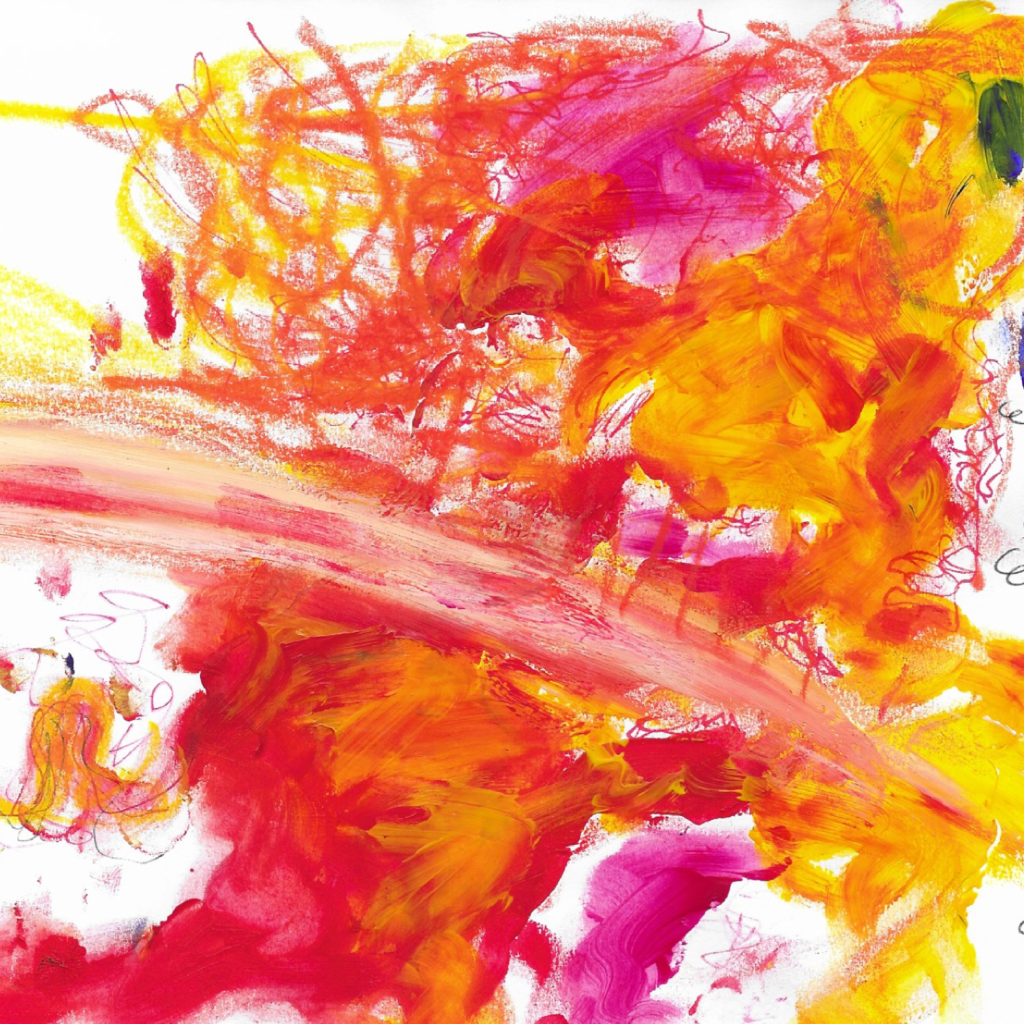
Final Designs
After several false starts in terms of what to do next with the illustration, I decided to place the image in Photoshop and see what I could produce. I experimented with some of the blend modes, but then decided to add another section of the original painting. This part was where I tried to depict the beat of the music.
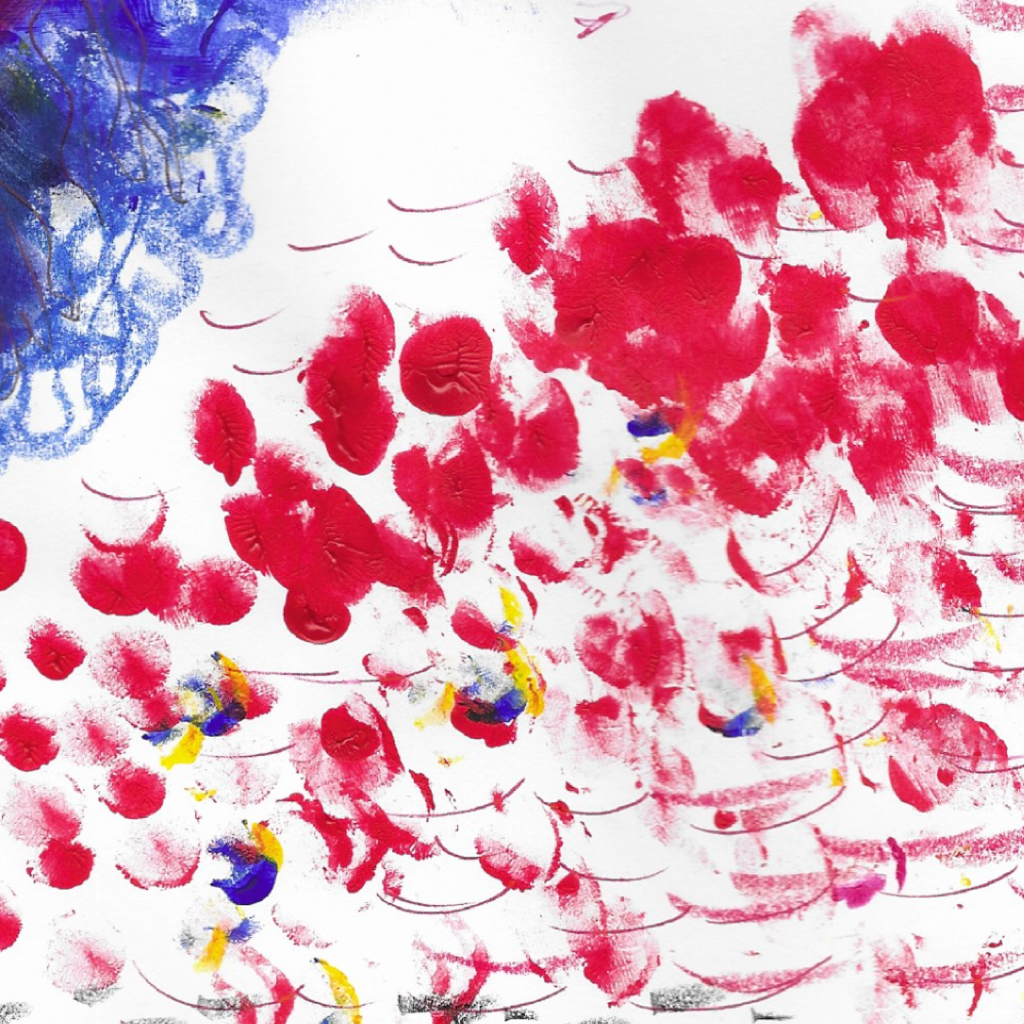
Incorporating this new section, I experimented further with blend modes. I also tried adding some digital paint strokes, but thought the two did not work well together and the composition already looked very busy. I did add a few digital strokes in the end, but focussed more on using blend modes and varying opacity levels.
I came up with a few different versions of the final result, which can be seen below. In terms of whether any of these could be considered suitable for a CD cover for the music I listened to, perhaps the first one below would be a candidate. I thought that my illustrations represented the term ‘reactive’, whilst the English translation of song title is ‘Tenderness’, so I’m not sure any of the others would be appropriate.
Final Thoughts
As I expressed at the beginning of this write-up, I found this exercise very difficult. However, I ended up being quite pleased with the final results and it demonstrated how I could create something not too bad from what I considered embarrassing in the beginning, I just had to persevere and not be restrictive. I hope that this experience will have helped me to become freer and more expressive in all my work.
References
BBC Teach, (n.d.). Abstract art timeline: colour and shape. [online] Available at: https://www.bbc.co.uk/teach/abstract-art-timeline-colour-and-shape/zmhy6v4 [Accessed: 28 July 2020].
Tate, (n.d.). Abstract art – Art Term. [online] Available at: https://www.tate.org.uk/art/art-terms/a/abstract-art [Accessed: 28 July 2020]
Tate, (n.d.). Futurism. [online] Available at: https://www.tate.org.uk/art/art-terms/f/futurism [Accessed: 28 July 2020].
Tate, (n.d.). Non-objective art – Art Term. [online] Available at: https://www.tate.org.uk/art/art-terms/n/non-objective-art [Accessed: 28 July 2020].
Tate, (n.d.). Orphism – Art Term. [online] Available at: https://www.tate.org.uk/art/art-terms/o/orphism [Accessed: 28 July 2020].
Tate, (n.d.). Wassily Kandinsky 1866-1944. [online] Available at: https://www.tate.org.uk/art/artists/wassily-kandinsky-1382 [Accessed: 28 July 2020].
The Art Story, (n.d.). Wassily Kandinsky Artworks & Famous Paintings. [online] Available at: https://www.theartstory.org/artist/kandinsky-wassily/artworks/#pnt_4 [Accessed: 28 July 2020].
Vergo, P. (2019). Music and abstract painting: the case of Kandinsky and Wagner. [online] Art UK. Available at: https://www.artuk.org/discover/stories/music-and-abstract-painting-the-case-of-kandinsky-and-wagner [Accessed: 28 July 2020].
